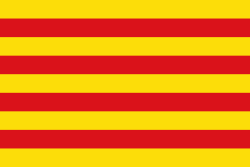Horb am Neckar
| Horb am Neckar | ||
|---|---|---|
|
| ||
| ||
 Horb am Neckar | ||
| Coordinates: 48°26′43″N 8°41′28″E / 48.44528°N 8.69111°ECoordinates: 48°26′43″N 8°41′28″E / 48.44528°N 8.69111°E | ||
| Country | Germany | |
| State | Baden-Württemberg | |
| Admin. region | Karlsruhe | |
| District | Freudenstadt | |
| Area | ||
| • Total | 119.84 km2 (46.27 sq mi) | |
| Population (2012-12-31)[1] | ||
| • Total | 24,292 | |
| • Density | 200/km2 (520/sq mi) | |
| Time zone | CET/CEST (UTC+1/+2) | |
| Postal codes | 72160 | |
| Dialling codes | 07451, 07482, 07483, 07486 | |
| Vehicle registration | FDS | |
| Website | www.horb.de | |

Horb am Neckar is a town in the southwest of the German state of Baden-Württemberg. It is located on the Neckar river, between Offenburg to the west (about 56 kilometres (35 mi) away) and Tübingen to the east (about 29 kilometres (18 mi) away). It has around 25,000 inhabitants, of whom about 6,000 live in the main town of Horb, and the remainder in 18 associated villages and districts which form part of the same municipality. If the entire municipality is counted, it is the largest town in the District of Freudenstadt.
Since 1 January 1981 Horb am Neckar has had the status of a Große Kreisstadt. It operates a combined administration with the neighbouring communities of Empfingen and Eutingen im Gäu.
Geography
Horb lies on the eastern margin of the northern part of the Black Forest just above the confluence of the river Grabenbach with the Neckar. The well-preserved old town, with an ancient castle and castle gardens and a typical market place where the town hall is still located, lies on a ridge overlooking the Neckar. The modern town and its outskirts stretch up the valleys of both rivers.
Constituent communities
In addition to the main town of Horb, the municipality includes a number of communities which are recognised within the terms of the 1970s Baden-Württemberg local government reform, that is they have an elected council and council chairman. These are Ahldorf, Altheim, Betra, Bildechingen, Bittelbronn, Dettensee, Dettingen, Dettlingen, Dießen, Grünmettstetten, Ihlingen, Isenburg, Mühlen, Mühringen, Nordstetten, Rexingen and Talheim, the last of which is made up of the formerly independent parishes of Obertalheim and Untertalheim. These are referred to formally (for example, in postal purposes) as Horb-Ahldorf, Horb-Altheim, etc. There are also other districts with distinct names, such as Hohenberg and Haugenstein, but no formally recognised boundaries, and numerous isolated hamlets with handfuls of inhabitants, such as Fronholzhof, Frundeckhof, Heidgrundhof, Hohenfichtehof, Markstallhof, Auchtert-Höfe, Breitenbaum-Höfe, Josefshof, Käppleshof, Kegelhof, Isenburger Höfe, Buchhöfe, Kreuzhöfe, Plattenhöfe, Ziegelhof, Heidehöfe, Kapellenhöfe, and Röteberg, not to mention even smaller settlements such as Neckarhausen or Priorberg.
Neighbouring municipalities
The following towns and communities border on Horb am Neckar, listing them in clockwise order starting in the east: Starzach (in Landkreis Tübingen), Haigerloch (Zollernalbkreis), Empfingen (Landkreis Freudenstadt), Sulz am Neckar (Landkreis Rottweil), Glatten, Schopfloch and Waldachtal (all in Landkreis Freudenstadt), and finally Haiterbach and Nagold, both in Landkreis Calw).
History
Horb was first documented as horv or horva, meaning swamp in Old High German, at 1090.
It is unclear when the city first got Town privileges.
In 1981 Horb became a Große Kreisstadt (major district town) due to an appliction of the city council when Horb reached a population figure of over 20,000 at 1979
Main sights


- The annual Renaissance fair "Maximilian-Ritterspiele" (Maximilian-Jousting) in Horb which takes place in the middle of June
- The annual Rock festival "Mini-Rock-Festival" taking place in late August since 2005 organised voluntarily by adolescents
Notable residents
- Veit Stoss, sculptor, painter and engraver
- Martin Gerbert, abbot of St. Blasien
- Berthold Auerbach, writer
- Maximilian Delphinius Berlitz, founder of the Berlitz Language Schools
- Michael Jung (equestrian), German equestrian and double Olympic gold medal winner 2012
International relations
Horb am Neckar is twinned with:
 Haslemere, United Kingdom, since 1991
Haslemere, United Kingdom, since 1991 Salins-les-Bains, France, since 1991
Salins-les-Bains, France, since 1991 San Just Desvern, Catalonia, Spain, since 1999
San Just Desvern, Catalonia, Spain, since 1999
See also
References
- ↑ "Gemeinden in Deutschland mit Bevölkerung am 31.12.2012 (Einwohnerzahlen auf Grundlage des Zensus 2011)". Statistisches Bundesamt (in German). 12 November 2013.
External links
| ||||||||
